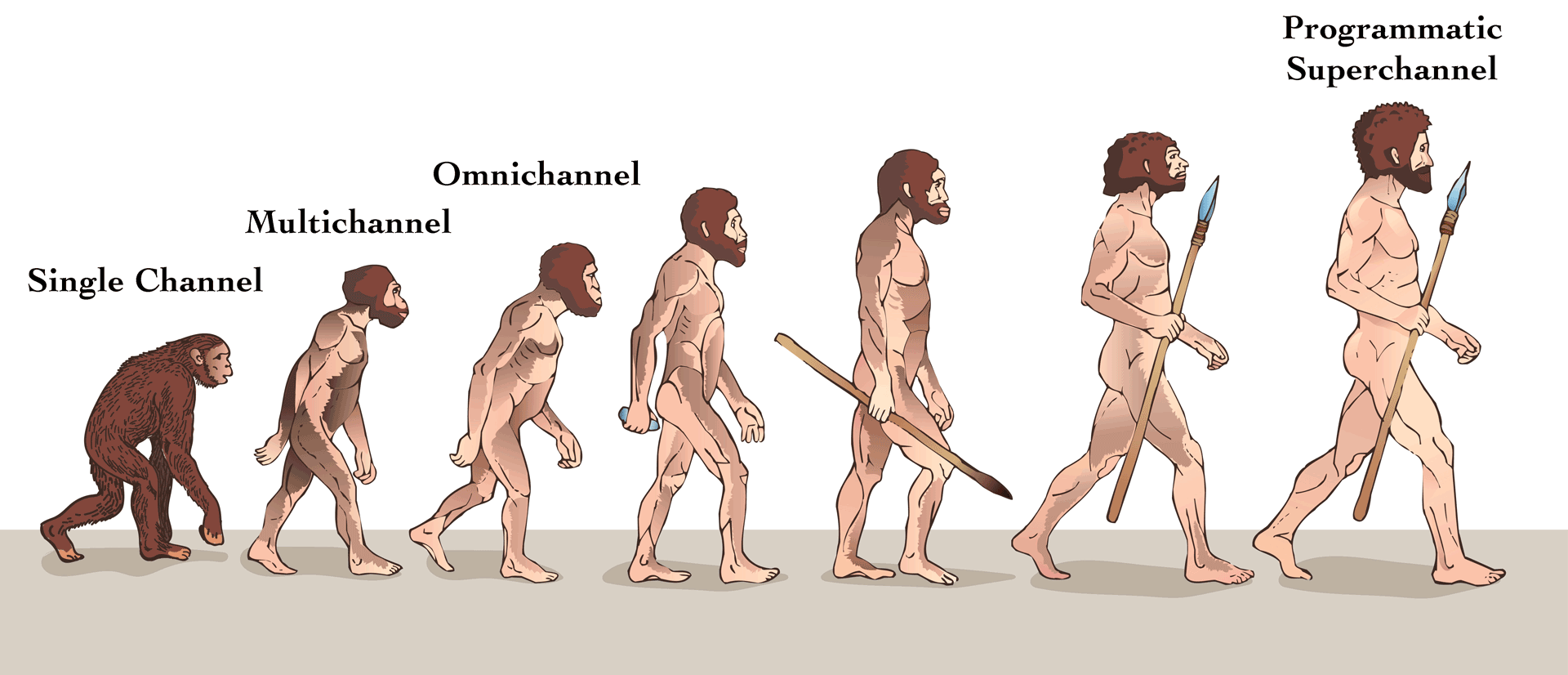The evolution of the programmatic superchannel
Is your marketing strategy multichannel? Omnichannel? Columnist Lewis Gersh says smart marketers worry less about terminology than ideology in trying to piece together the ultimate programmatic superchannel.
 Semantics has always been a key marketing component. That’s how “used cars” became “pre-owned vehicles.” And lately, we’ve seen digital marketers get bogged down in semantic table tennis in the discussion of the terms “multichannel” and “omnichannel.”
Semantics has always been a key marketing component. That’s how “used cars” became “pre-owned vehicles.” And lately, we’ve seen digital marketers get bogged down in semantic table tennis in the discussion of the terms “multichannel” and “omnichannel.”
Six of one, half a dozen of the other?
If you can’t distinguish between multichannel and omnichannel, don’t be embarrassed. A lot of other marketers don’t know the difference either. Basically, it comes down to integration. Multichannel doesn’t have it. Omnichannel is supposed to have it — and it kinda does, but in very limited form.
Essentially, multichannel involves a “Release the hounds!” approach to marketing. It’s not very systematic or disciplined. The consumer is targeted on multiple platforms simultaneously. But comparing the effectiveness of one channel to another can be difficult, if not impossible.
Multichannel marketers “likely structure their organization into ‘swim lanes’ focused on each channel, each with their own reporting structure and revenue goals,” Stacy Schwartz, an adjunct professor at Rutgers Business School, told EContent. The result can be “friction and misaligned incentives.”
Omnichannel, on the other hand, recognizes that the consumer often fails to stay in those designated “swim lanes.” The theory is that a company’s marketing efforts shouldn’t either. The goal should be to programmatically enhance not just efficiency but also efficacy across all channels.
So far, however, the only thing omnichannel has really accomplished is to achieve real-time reporting across channels rather than truly integrated marketing. (The lack of an industry-wide standard for reporting metrics further complicates things.)
In other words, omnichannel simply allows a marketer to quickly track results across various channels and say, “How far short of our potential are we falling? Let me count the ways.”
Fine-tuning your channels
What marketers need to understand is that a truly integrated approach isn’t just about tracking which efforts are succeeding and which are failing. It’s about figuring out the reasons for those successes and failures. You can then use that data to tweak your overall approach — across all channels, simultaneously, in a way that can be tracked from a single master control panel.
That’s not happening yet. In particular, the ability to identify pain points and eliminate them is a key element often missing in the omnichannel equation.
So does that mean that today’s “omnichannel” marketers are incompetent? Not at all. It just means that as an industry, we aren’t where we need to be yet. It was too much to expect a revolution. What we’re witnessing is an evolution.
Think of it as one of those “stages of man” exhibits. So far we’ve reached only the second or third stage. But we can see that ultimate programmatic superchannel starting to take shape.

We can see it in the form of things like “digitally reactive direct mail,” as Jim Cochrane, chief marketing and sales officer and executive vice president of the United States Postal Service, called it. (Disclosure: my company, PebblePost, offers digitally reactive direct mail services.)
Digitally reactive direct mail enhances the best of both digital and direct mail while mitigating the worst. You can use data to track and retarget the consumer one-on-one based on their online behavior (as opposed to, say, shotgunning pieces of mail to every person in a particular ZIP code). But instead of retargeting them with a tiny, ephemeral digital ad, you present them with a piece of tangible collateral.
They can spend time with that collateral on their terms, not the publisher’s. No bots are involved, and there’s no disruption of the consumer experience or ad-blocker backlash. Best of all, the results are genuinely measurable.
And that’s just one small example of the possibilities. Imagine what will happen when marketers refine that approach and apply it across the board to TV, outdoor, retail, print — everything.
Imagine being able to programmatically tune your channels very quickly and have visibility and transparency across all of them.
That could have an impact an order of magnitude greater than anything we’ve ever seen. And whatever it’s ultimately called, the end result really will be a programmatic superchannel.
Contributing authors are invited to create content for MarTech and are chosen for their expertise and contribution to the search community. Our contributors work under the oversight of the editorial staff and contributions are checked for quality and relevance to our readers. MarTech is owned by Semrush. Contributor was not asked to make any direct or indirect mentions of Semrush. The opinions they express are their own.
Related stories